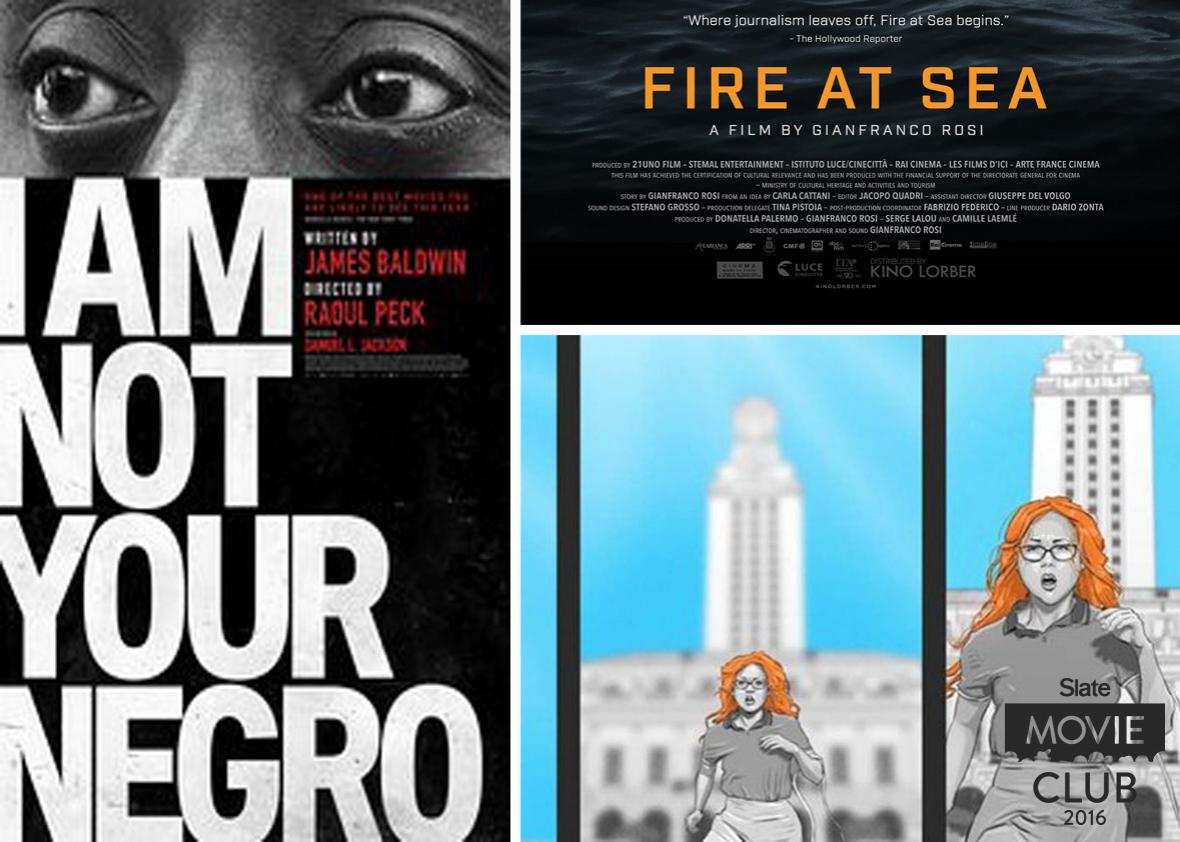Citizens!
The past several years have indeed been exceptional ones for nonfiction filmmaking. While the documentary renaissance of the 2000s seemed to be fueled in part by social issue movies (An Inconvenient Truth; Super Size Me; Food, Inc.; Inside Job, assorted Michael Moore projects, etc.), in recent years docs have gotten more interesting and personal and innovative, instead of just scaring the shit out of us about what we’re eating, drinking, breathing, and thinking.
Now, scaring the shit out of us isn’t a bad thing—An Inconvenient Truth is one of the greatest horror films I’ve seen, and absolutely vital—but I’m seeing a lot fewer docs that are determined to tell me all the things I’m doing wrong and more ones interested in character, and experience, and form. Ironically enough, those do a more successful job of challenging my assumptions and making me see things anew than films that merely confirm that, yes, my water is poisoned and yes, it’s thanks to any number of government and/or corporate boogeymen.
But we know that form and content are not mutually exclusive—quite the opposite. A film like Raoul Peck’s I Am Not Your Negro is certainly a “social issue film”—and Peck is one of the most activist of directors—but it’s also a movie that, through Samuel L. Jackson’s whispered, first-person narration of James Baldwin’s words, and through its collagelike use of footage, creates a dreamlike state, pulling you into its world through the filmmaking itself. What it says is important, but how it says it is just as critical.
I already talked in an earlier post about Tower, the animated doc about the University of Texas mass shooting. But there, too, we have an example of a film that could have just as easily been a matter-of-fact talking-head fest about an important historical incident, but it chose to go further and actually challenged the limits of the documentary form. (Is it even a doc, when so many of the people being interviewed on screen are in fact animated versions of younger actors who themselves are recreating the words of the survivors? Who knows? Who cares? It’s magnificent, and I wouldn’t have it any other way.)
Gianfranco Rosi’s Fire at Sea, too, could have opted for a straightforward immersion into the harrowing refugee crisis in the Mediterranean—and I know that some critics felt it should have been that. But instead, Rosi juxtaposes the world of the refugees with the easy cadences of life in a small fishing village on the island of Lampedusa. So, Fire at Sea is, in effect, two movies that cannot be reconciled with one another. And that’s interesting! That says something about our world, and how we live in it, because it draws our attention to the disconnect between us and these people who’ve lost everything
The Bush administration, the wars in Iraq and Afghanistan—those were some of the forces that helped drive the activist doc revolution. Such movies certainly didn’t go away. (Any attempt at cultural criticism like this has to traffic in generalities, and I’m conveniently ignoring plenty of straightforward, and successful, social issue docs that have come out over the past few years. Again, it’s a matter of emphasis, and sensing trends—not declaring absolutes.) But I wonder if with the changing political climate we’re about to see a return to that type of filmmaking. Sundance starts in a couple of weeks, and it’ll kick things off with the sequel to An Inconvenient Truth. Only I hear Kate Lyn Sheil is playing Al Gore this time.
Is O.J.: Made in America a film? I think so, yes. It’s certainly not the first documentary to be financed by and presented on a TV channel, and friends who actually watched the whole thing beginning to end in a theater have said that the experience was quite transformative. I, on the other hand, experienced it as a TV event, and in the worst way possible—in something like 10 or 12 segments, watching it in bits and pieces on my DVR, sometimes falling asleep and rewinding to rewatch the sections that I missed, sometimes out of order. My wife watched parts with me, then I’d see certain parts by myself and then have her come sit through those sections with me. Seriously, the way we did this was a mess—absolutely the way that we might watch a TV news extravaganza or, hell, a season of Top Chef. And yet, it was clear throughout that there was a film there, a unified aesthetic experience, with a visual strategy and rhythm all its own. To put it another way: I could tell I was missing something by not seeing it in a theater. (More cynically: Do I wish O.J. were officially deemed not a theatrical release, so Cameraperson might have a shot at that Oscar? Yes, sadly. Yes. I am a bad person.)
As for Beyoncé and Lemonade—I loved it, but then again, a movie looking like a perfume commercial is not really a problem for me, given that I put Terrence Malick’s Knight of Cups on my list of the best movies of the year. And perfume commercials didn’t just emerge fully formed on the airwaves; they came from cinema. I’m reminded of something Godfrey Reggio told me, years ago, when I noted that his aesthetic in films such as Koyaanisqatsi had been co-opted by ads for everything from cars to gas utilities to aircraft companies. He said, “We created a language to describe the beast, and the beast took our language and used it to describe itself.” If Beyoncé’s passionate, angry, sensuous visual album helps reclaim that language a little—and revive interest in Julie Dash’s monumental Daughters of the Dust along with it—then I’m good.
Love,
Bilge
